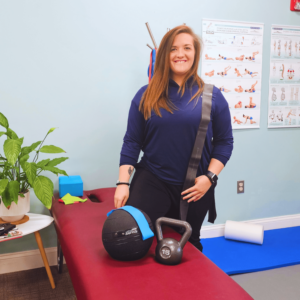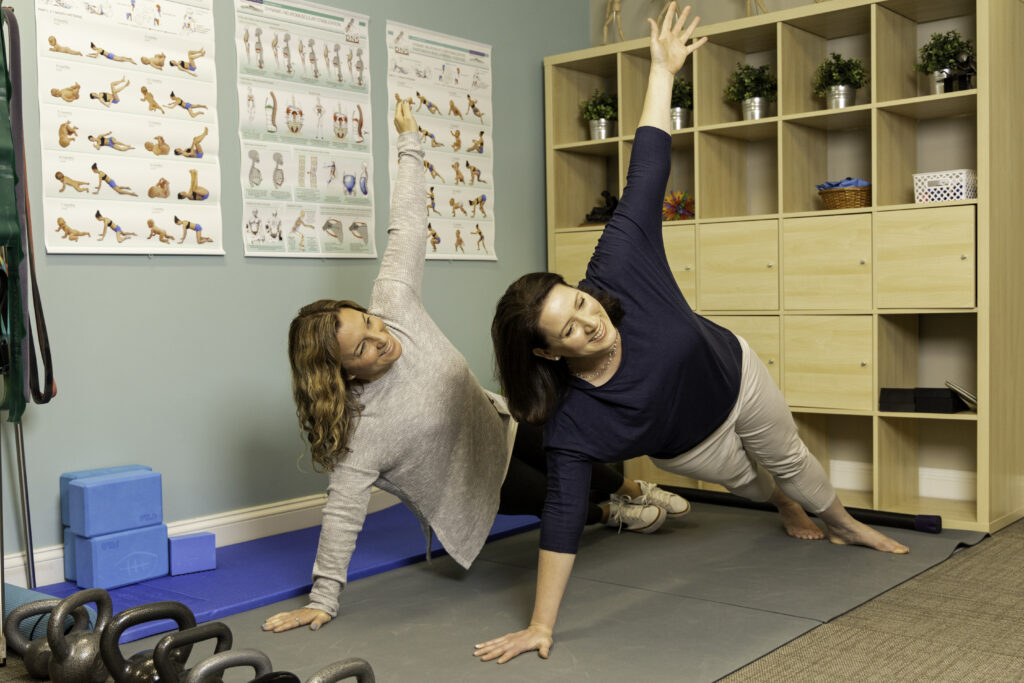Have you ever gone to straighten your back after a short period of bending over and had a pain shoot across your lower back? You’re not alone! Approximately 80% of us will experience some form of lower back pain at some point or other in our lives. Fortunately, lower back pain usually gets better on its own. However, if we manage to strain our lower back, the symptoms can be very painful. The lower spine, also called the lumbar spine, depends on muscles and soft tissues to help hold the body upright and support the weight from the upper body. Putting them under too much stress at work or at play can cause what is known as lumbar strain.
Types of Lumbar Strain
There are two common types of injuries in the lower back:
- Muscle strain – When fibers in the back muscles begin to tear from being overstretched or overused, there is muscle strain.
- Lumbar sprain – When ligaments that connect the bones are overstretched or torn, there is ligament strain.
Since both of these conditions have similar symptoms – inflammation, tenderness, and muscle cramps that can cause intense pain – they usually receive the same treatment.
How to Avoid Straining Your Back at Work
A number of factors can contribute to experiencing lower back strain at work. Avoiding them can prevent back pain as well as other musculoskeletal conditions:
- Exerting – Lifting or moving heavy objects without proper posture and preparations can cause injury. Make sure to plan ahead and get help if you need it to avoid a back injury.
- Poor posture – Sitting for prolonged periods in an awkward position or poor posture without proper lumbar support can cause lower back strain. Be aware of your posture and make sure you are following office ergonomics best practices.
- Repetition – Repeating certain movements, especially those that involve twisting or rotating your spine, can injure your back. Try to take a break from repetitive movements or change your position when possible.
- Inactivity – An inactive job or a desk job can contribute to back pain. Make sure to use proper posture and take breaks as often as you can to stretch your back and limbs.
How to Avoid Lumbar Strain at Play
Getting good exercise is an important part of our physical and mental health. Many of us get exercise in the Spring by participating in a sports activity such as tennis or biking. However, most sports have the inherent risk of lumbar strain or other injuries. Ways to avoid sports-related back injury include:
‘
- Warming up – Many strains occur simply because of a lack of proper warm-up exercises. Make sure to warm up and stretch before and after any sports activity, so as to keep the back muscles limber and supple during the activity or game.
- Using proper form and technique – There is a reason why sports activities have guidelines on form and technique. Proper form not only makes us better at a sport, it prevents back injury.
- Strengthening your core – A strong core not only makes us more agile and responsive, it supports the lower back and prevents injury.
- Maintaining an ideal body weight – If we are overweight, we place excess strain on the spine. Not only that, too much weight creates an imbalance in the spinal three-curve system, which leads to spine alignment issues and a chance for pressure-related back problems. Maintaining an ideal body weight keeps us healthier in many ways and prevents back injury.
Following these tips should help you prevent strain in the lumbar region in your back. Taking a few preventative measures to protect your back will make it possible to stay healthy at work and during your favorite sports activities, for many years to come!





